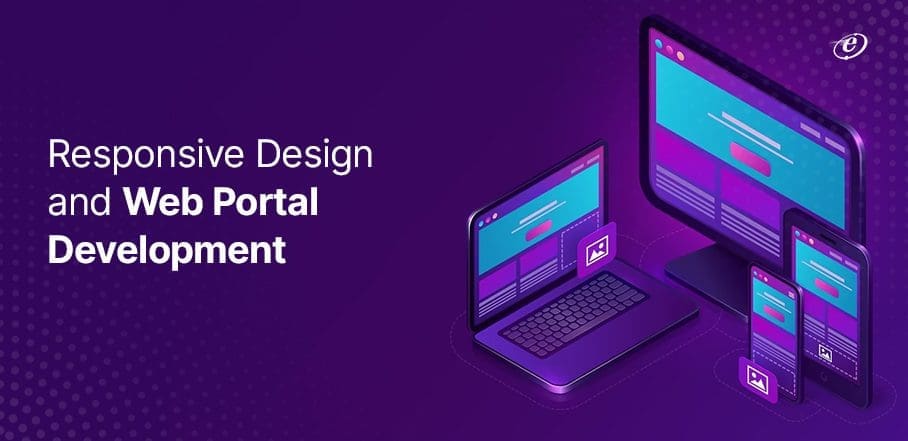
UX Trends 2024: 7 Industry-agnostic Ways to Win More Customers
A competitive price tag, high-quality product range, and good customer service alone should be enough to set the cash registers ringing forever, right?
Only that Walmart, a pastmaster at those aspects, thinks otherwise.
Which is why the retail behemoth invested in a new store design and introduced it to the public in September 2020.
Although similar to the previous one, the new design does a better job of consolidating different product categories and includes clearer signs to help with easier navigation.
Interestingly, these signs also match the ones used in Walmart’s mobile application.
The result? A near-effortless user experience that enables customers to find what they want in the least possible time.
Not only does this boost conversion rates but also increases the customer retention rate and LTV (Life Time Value) as people keep coming back for the quick shopping experience and spend the saved time browsing the store’s other offerings.
The story of Walmart’s new store design, as such, is the story of the importance of user experience (UX) for businesses that want to succeed in today’s digital world.
If you are one such business and would like your UX to contribute to the growth, here are seven UX trends for 2021 that you need to consider for your online presence.
Top 2022 UX Trends to Watch Out For
1) Super Apps: One App for Multiple Needs
Over the past two decades, mobile app development has undergone seismic shifts in terms of technologies. However, it has more or less stuck to the concept of ‘one app, one purpose’.
But this is likely to change in the coming years as market models led by China (WeChat), Latin America (Rappi), and India (Jio) have shown that businesses can gain and hold onto their customers by fulfilling multiple needs.
Known as super apps, such applications can serve needs as varied as social media, messaging, dating, gaming, money transfer, investment, food delivery, hotel, and taxi booking, and a lot more.
A super app allows a company to create an ecosystem that users become loyal to with time, thus paving the way to create a sustainable revenue stream.
On the flipside, western audiences are relatively new to the super app concept, meaning it might take some time before super apps gain traction in those markets.
2) Mobile-First Design: Be Where Your Customers Are
Mobile-friendly design became a byword ever since Google announced its mobile-friendly search algorithm update in 2015. The update prioritised websites that were responsive and mobile-friendly in search engine rankings.
However, Google shifted the conversation decisively from mobile-friendly to mobile-first UX design by rolling out its ‘mobile-first indexing’ update in 2019.
To the uninitiated, what this means is that Google uses the mobile version of your site’s content for indexing and ranking it, thus making mobile-first design the number one priority for UX designers.
This is only going to become more important in 2021 as businesses look to hire dedicated developer to make their services more feature-rich, responsive, and functional on mobile interfaces.
And with over 55% of searches coming from mobile devices and 95% of them cornered by Google, businesses have to prioritise a mobile-first UX design over everything else.
3) Hyper Personalization: A Unique User Experience for Every User
No two customers are the same – this maxim lies at the heart of hyper-personalization, best summed up as creating content and recommendations for each user based on that user’s shared information (date of birth, browsing and buying history etc.).
Hyper personalization helps increase your conversion rates by making each user feel special and cared for with personalized service, much like how retail store personnel suggest products after inquiring about your preferences and buying pattern.
The role of AI in improving this aspect of user experience is going to increase even more in 2021 and beyond. For instance, it will become capable enough of changing the UI’s appearance, the position of elements, behaviour, and tone to suit the buyer’s persona.
Today, AI is already an inherent part of the customer retention strategy of companies such as Netflix, Spotify, and YouTube as they recommend personalized content based to users.
In the ecommerce space, Amazon uses AI to create a personalized homepage for each customer by analysing their browsing history, shopping cart, and wishlists.
Read more: 6 Smart Shopify Ecommerce Personalization Examples
4) Voice Recognition: Reducing Non-Essential Effort
Voice recognition appears to be one of those things that seem to have been around forever, but with little success to show for it.
That perception is set to change as its underlying technologies have made giant leaps over the past couple of years, clearing the way for AI voice assistants to be smarter and more accurate than ever before.
For instance, Google’s speech recognition tech’s accuracy is as high as 95% for regions where English is prominently spoken. And with over 50% of total searches expected to be done sans a keyboard or screen, businesses have to find ways to tie in voice recognition with their user experience.
Our dedicated developer can also use AI-based voice recognition to implement touchless interactions, which are voice-first interfaces that shorten the buying journey by reducing the number of steps a user has to complete.
The next set of advancements in AI-based voice assistants will also bring in user mood analysis, whereby the AI will try to understand the user’s intention and mood by analyzing the tone and tenor of their speech.
5) VR and AR: The New Reality for a Changed World
In the pre-COVID world, VR and AR were mostly perceived as fancy entertainment technologies with little potential for commercial impact in other sectors.
But the pandemic and 2020 put paid to those assumptions as remote working became the norm and VR and AR made inroads into sectors as varied as education, healthcare, real estate, and even art.
With businesses around the world having tasted the benefits of remote work and users unlikely to shed the social-distancing mindset anytime soon, it’ll be worth their while for businesses to integrate VR and AR with their offerings.
These two technologies let you create spectacular user experiences through immersive designs, removal of physical barriers, and integration of fictional design elements, making them ideal for businesses in ecommerce, education, entertainment, media, retail, real estate, gaming, and home improvement, among others.
Read more: Conversion Rate Optimization: How We Boosted Our Client’s Landing Page Conversion Rate by 40%
6) Data Visualization: Let the Numbers Do the…err… Showing
A lot of businesses today rely on data to make a case for their offerings with users. However, a many miss a trick by relying on data alone to get the message across, completely ignoring the presentation part.
This is tragic as communicating data through intuitive and interactive visual representations is the best way to help your users understand data and nudge them into engaging with your offering.
Data visualization as a UX tactic is also industry-agnostic and can be used for a wide variety of applications. For instance, personal finance apps can use interactive infographics to help a user understand their spending patterns.
Closer home, we recently assisted a running shoe reseller in helping their customers figure out the right shoe for their needs by using interactive data visualization based on their expected weekly running mileage, weight, and running surface.
7) Microcopy/UX Writing: Write the Way You Speak
As with data, the modern consumer is also flooded with content by brands. While personalizing your content is one way to cut through this clutter, using microcopy and UX writing is another way to help your UX stand out from the rest.
Among the hottest UX trends, microcopy involves adding a unique tone to your website’s content and building a good relationship with your user. This works best for websites that have a unique brand voice and want that to reflect in the copy too.
UX writing, similarly, offers a departure from conventional copywriting whose run-of-the-mill phrases and styles are familiar (ergo, uninspiring) to users. It involves using more informal text that closely resembles the way you would speak with your user in real life.
This widens the scope for you to include humour and pop culture references in the site’s copy with the only caveat being keeping them relevant to your target audience.
Both these UX trends help increase visitor engagement which is the first step towards converting and retaining a customer.
Read more: 7 Common Web Design Mistakes — How Can You Avoid Them?
Over to You: UX is the Means Towards a Profitable End
UX design is cyclical, meaning a trend in 2021 might very well be inspired by what passed for hip in 2016. Which is why we believe that UX design is the means to achieve the desired business goal and not the end itself.
If this requires mixing and matching one or more of the UX trends 2022 listed above or pivoting to new trend on the block, so be it.
As a web design and development company for over two decades, we’ve used this flexible approach to design UXs that not just reflect the brand’s/business’s ethos but also put the user front and centre.
If you are looking to hire dedicated developer for creating a user-focused and result-oriented UX for your app or website, get in touch with us today.
And if you liked this post, do subscribe to get informative posts about web and mobile development, data analytics, and eCommerce delivered to your inbox. Thank you for reading!



